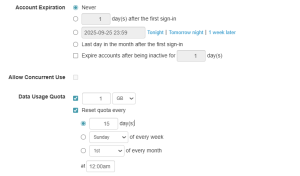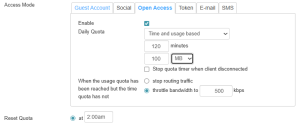The maritime sector has long been characterised by its isolation, with seafarers enduring extended periods away from land and loved ones. Today, a new force is reshaping this traditional sector: digitalisation. This shift is fundamentally altering the concept of crew welfare, with profound implications for everything from crew happiness to business competitiveness.
The Seafarers Happiness Index (SHI) is a quarterly survey that tracks the well-being of crews worldwide in several aspects of life, including connectivity. In Q4 2024, connectivity scored 7.05, down from 7.38 in the previous quarter. The drop in this score shows rising dissatisfaction with onboard internet quality and consistency. A digital divide leaves some seafarers connected while others struggle with slow, limited access. This gap harms mental health, heightens isolation, and makes high-speed connectivity a vital tool for maintaining family bonds at sea.
Specifically, for Generation Z seafarers, who have grown up with smartphones and instant connectivity, a life at sea without reliable internet is almost unimaginable. They don’t just see connectivity as a perk; they see it as a non-negotiable element of their working and personal lives. They expect employers to provide tools for video calls, messaging, social interaction, and entertainment. When these needs are met, these young mariners feel valued and respected, leading to higher retention rates and improved morale.
As the 11th largest merchant marine fleet in 2025, with around 65,000 active seafarers and over 140,000 maritime professionals worldwide, Turkey is a cornerstone of global shipping. Yet with a looming officer shortage of nearly 90,000 by 2026, Turkish operators face mounting pressure to retain skilled talent. The well-being of these seafarers is directly linked to the country’s continued success in the global market, and that well-being is increasingly dependent on high-speed connectivity.
The advent of Low Earth Orbit (LEO) satellite networks, like Starlink, is revolutionising what’s possible for crew welfare. Starlink offers a game-changing combination of high speed and low latency. As more vessels adopt it, the Seafarers Happiness Index score for connectivity will inevitably improve, helping close the digital divide and raising overall crew satisfaction.
With Starlink, connectivity is no longer limited to basic messaging; crew can now make real-time video calls, stream content, and access a full range of online services. This change is dramatic: in the past, crew members were often limited to an average of 500 MB per day, but with high-bandwidth, low-latency LEO technology, daily allowances can now comfortably range between 1 GB and 10 GB. This newfound capability is not just about entertainment; it’s about enabling telemedicine, online education, and seamless social interaction, all of which are vital for a seafarer’s overall well-being.
For the Turkish maritime sector, which operates across key international routes in the Black Sea, Aegean, and Eastern Mediterranean, the Starlink Maritime Portfolio offers high-speed connectivity across major maritime routes with resilient and cost-effective alternatives for domestic trips.
While high-speed connectivity is a powerful tool, it must be managed correctly to be a scalable and effective solution. Uncontrolled access can lead to exhausted bandwidth, security risks, and escalating costs. This is where managed connectivity becomes indispensable.
A voucher system addresses these challenges by providing controlled, prepaid internet credits. Each crew member receives a set allowance, ensuring fair distribution of connectivity while preventing misuse. Beyond fairness, it empowers seafarers with accountability and flexibility, since they know exactly how much data is available and can plan usage accordingly.
IEC Telecom has elevated this model with a robust voucher system integrated into the Starlink Maritime Portfolio. Unlike basic systems that offer rigid allowances, this innovative solution allows operators to customise how access is distributed. Vouchers can be configured by duration, by volume of data, or by bandwidth limits. They can be made definite for short voyages or automatically extended for long contracts. This flexibility ensures that connectivity scales with the vessel’s operations, a feature particularly valuable for Turkey’s busy maritime sector.
From a welfare perspective, IEC Telecom’s voucher system empowers crew members by giving them choice. If the corporate allowance runs out, they can buy additional credits either ashore or directly from the captain. This removes the frustration of being cut off while also keeping the operator’s costs predictable and under control. Importantly, it allows seafarers to budget their usage for video calls, social media, or streaming, depending on their priorities.
For vessel operators, the benefits are significant as well. First, it reduces administrative pressure, as the system can set up rules for automatic renewal for permanent crew members who stay aboard for a prolonged period. Secondly, it provides the IT manager with advanced reporting, enabling them to identify consumption patterns and adjust rules accordingly. Lastly, it is about improving working conditions, creating a favourable environment to attract seafarers of the new generation.
By balancing individual freedom with operational control, IEC Telecom’s voucher system transforms high-speed internet from a potential liability into a managed asset. Ultimately, this approach promotes fairness, protects the ship’s resources, and strengthens crew satisfaction. Seafarers feel supported and valued, while operators maintain oversight and cost efficiency.
The crew’s connectivity process begins with a captive portal, which can be fully customised in line with vessel operator requirements. Internet access is granted only upon authentication with unique user credentials. Once crew members log into the IEC Telecom voucher system via the portal, connectivity is enabled.
On the administrative interface, the ICT manager is equipped with flexible control parameters to assign and manage user access.
Account renewals can be configured on a monthly, bi-weekly, or per-gigabyte basis.

For illustration, consider a vessel operating under an unlimited service contract with eight crew members. Each individual may receive a 1 GB allowance, automatically renewed every 15 days. This configuration is well suited for vessels with long-term crew deployment.
The ICT manager can set allowances that refresh automatically every 24 hours, based on a predefined data cap.

The voucher system also provides short-term allocations for transient crew. This option is relevant in offshore operations, such as oil and gas rigs, where personnel board temporarily to conduct inspections, deliver spare parts, or perform technical interventions.
For instance, temporary accounts may be assigned 500 MB of data, valid for 24 hours, with expiry programmed at a specified cut-off time such as 02:00 hours.

Managers may also allocate unlimited data while controlling speed once a set threshold is reached. For example, a vessel operator might provide a weekly allowance of 10 GB for high-speed applications. Once this threshold is exceeded, the user is not disconnected but instead continues with reduced speeds — 500 Kbps for downloads and 200 Kbps for uploads. This ensures access to essential services such as messaging apps, while preventing bandwidth-heavy activities.
Managing a voucher system and a vessel’s entire network requires a powerful, centralised platform. OptiView, a value-added service by IEC Telecom, provides IT administrators with complete visibility and control over their onboard connectivity from a single dashboard, including key features of the voucher system. They can monitor crucial details for each voucher, including user details (name & email), voucher type, consumed airtime, and remaining time. This level of oversight is essential for optimising the digital experience for the crew and ensuring a no-waste policy.
Using the advanced filtration toolkit within OptiView, an ICT manager can configure different crew welfare protocols for LEO, GEO, and GSM environments. For instance, video calls may be reserved for LEO and GSM networks, while VoIP calls are made more broadly available by including GEO VSAT. Meanwhile, WhatsApp messaging can be enabled across all environments, including GEO L-band.
In addition to voucher management, OptiView offers a wide range of functionalities.
As Turkish shipping adopts high-speed satellite connectivity, the risk of cyber threats grows. Many incidents stem from personal devices, which may unknowingly carry malware into the vessel network. OptiView provides a safeguard by separating crew traffic from corporate operations, ensuring a secure digital environment onboard. Even if a crew device is compromised, the ship’s critical systems stay protected.
This segregation, powered by IEC Telecom’s satcom expertise, strengthens cybersecurity in Turkish satcom. It ensures uninterrupted business operations and helps shipowners remain compliant with evolving maritime cybersecurity regulations.
The Turkish maritime industry is at a pivotal moment. The convergence of a global talent shortage, the expectations of a new generation of seafarers, and the rise of high-speed LEO connectivity presents a unique opportunity. For a seafaring nation like Turkey, investing in a modern, managed crew welfare solution is a strategic imperative for attracting and retaining the best talent. With OptiView at its core, IEC Telecom’s Starlink Maritime Portfolio sets a new benchmark for wellbeing at sea.